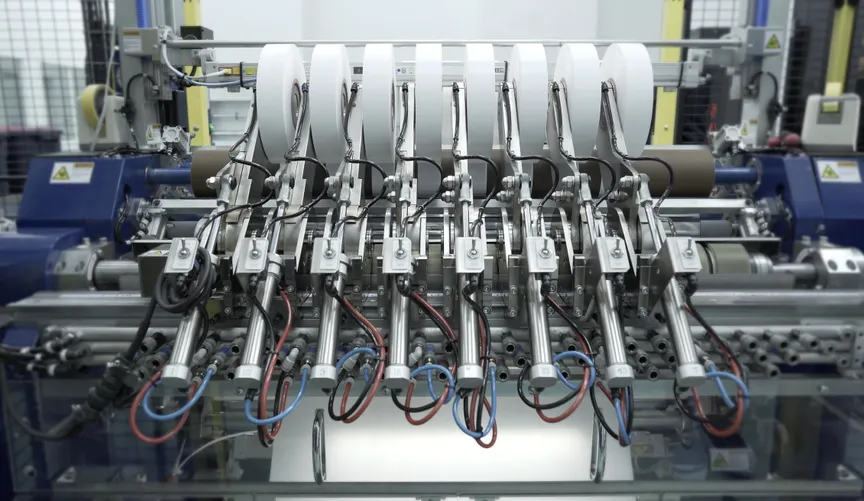
Companies have invested more than $100 billion in U.S. electric vehicle and battery manufacturing since the Inflation Reduction Act was passed two years ago. A long list of components go into those EVs and batteries — and the more of them that can be produced in the U.S., the better.
On Tuesday, the Biden administration offered a conditional $1.2 billion loan to Entek Lithium Separators, a division of U.S.-based manufacturer Entek, which makes one of those essential battery components. Entek plans to use the loan to back the financing of a $1.5 billion separator factory it’s building in Terre Haute, Indiana.
Entek competes against a host of Asian companies in the roughly $6 billion market for manufacturing battery separators. These membranes play a key role in separating the cathodes and anodes within battery cells, allowing the chemical process of charging and discharging while preventing electrical shorts or thermal runaways (i.e., fires or explosions).
The conditional loan commitment is the latest from the U.S. Department of Energy’s Loan Programs Office (LPO) aimed at bolstering U.S. competitiveness in a key sector of the clean economy. Since the office was revived under the Biden administration, “11 out of our 20 conditional commitments have been in the EV supply chain,” LPO head Jigar Shah told Canary Media.
“We started with a lot of interest in the battery manufacturing space,” he said, with a $2.5 billion loan to Ultium Cells, a joint venture of U.S. automaker General Motors and South Korean battery giant LG Energy Solution, in 2022; and a $9.2 billion loan to BlueOval SK, the joint venture of Ford and South Korea–based battery maker SK On, in 2023.
“But we have the more complete supply chain” to consider as well, Shah said. LPO loans and loan guarantees have backed a lithium mining and processing project in Nevada, a graphite processing facility in Louisiana, and two U.S. lithium-ion battery recycling facilities that will supply domestically produced materials for U.S.-made EV batteries. Last year, LPO offered a conditional $362 million loan commitment to CelLink, maker of battery-pack interconnection circuits, to built its first large-scale U.S. manufacturing site in Texas.
Expanding the supply of domestically produced battery materials and components is an important part of the Biden administration’s strategy to support U.S. job growth and economic competitiveness through its clean energy policies, Shah said. The Inflation Reduction Act’s 30D tax credits, which can cut the cost of new EVs by up to $7,500, depend on a certain portion of every battery being built in the U.S., and as of this year can’t be applied to EVs with batteries or components manufactured by companies tied to a “foreign entity of concern” — namely China.
China dominates every aspect of lithium-ion battery production today, and it will take years to build up alternative supply chains. But other parts of the Inflation Reduction Act, such as the 45X manufacturing tax credits for clean energy technologies including batteries, are providing additional support for U.S. investments.
Entek is in the midst of an expansion plan that calls for reaching 1.4 billion square meters of annual separator production capacity by 2027, enough to supply about 1.4 million EVs — up from the 125 million square meters of production capacity today from its Oregon factory. The company opened a new factory last year in Nevada to build the equipment that will manufacture separators in Indiana, and it plans to open the Indiana facility between 2025 and 2027.
DOE estimates that the North American lithium-ion EV battery industry will require 7 to 10 billion square meters of annual separator production by 2030, with every gigawatt-hour of battery cell manufacturing requiring from 7 million to 10 million square meters of separator material, depending on whether those batteries use cylindrical, pouch, or prismatic cells. Entek’s Indiana facility will be able to supply enough separator material for up to 1.9 million midsize EVs or 1.3 million electric SUVs per year when it’s up and running.
